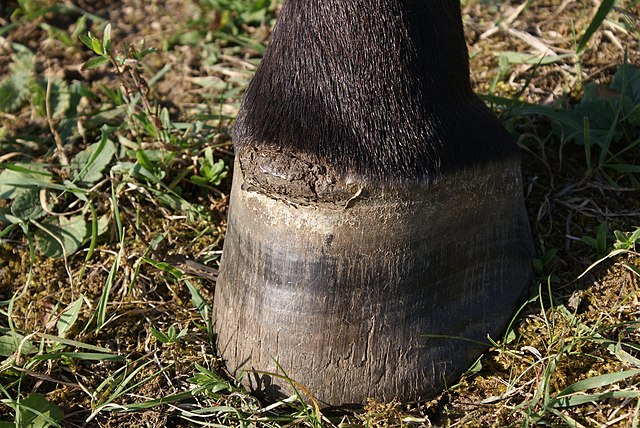Lameness is an abnormal gait or stance of an animal that is the result of dysfunction of the locomotor system. In the horse, it is most commonly caused by pain, but can be due to neurologic or mechanical dysfunction. Lameness is a common veterinary problem in racehorses, sport horses, and pleasure horses. It is one of the most costly health problems for the equine industry, both monetarily for the cost of diagnosis and treatment, and for the cost of time off resulting in loss-of-use.
Trauma is a common cause of lameness in horses.
Splints can be palpated on physical examination.
Chronic lameness often causes an upright hoof capsule.
An abscess has ruptured out of the coronary band of this horse.
Equine polysaccharide storage myopathy
Equine polysaccharide storage myopathy is a hereditary glycogen storage disease of horses that causes exertional rhabdomyolysis. It is currently known to affect the following breeds American Quarter Horses, American Paint Horses, Warmbloods, Cobs, Dales Ponies, Thoroughbreds, Arabians, New Forest ponies, and a large number of Heavy horse breeds. While incurable, PSSM can be managed with appropriate diet and exercise. There are currently 2 subtypes, known as Type 1 PSSM and Type 2 PSSM.
A representation of glucose molecules linked by α-1,4-glycosidic bonds, with a single α-1,6-glycosidic bond leading to a branch off of the chain.
The Belgian Draft is one breed with a very high prevalence of PSSM in their population.






